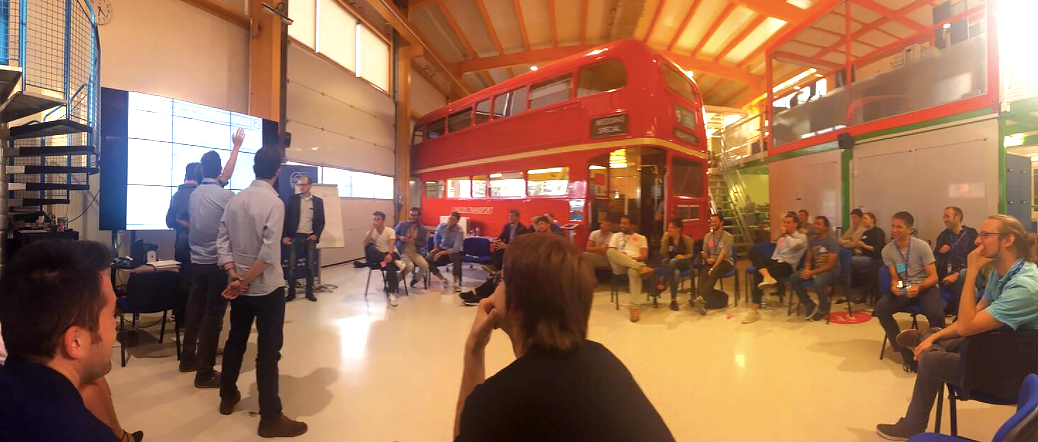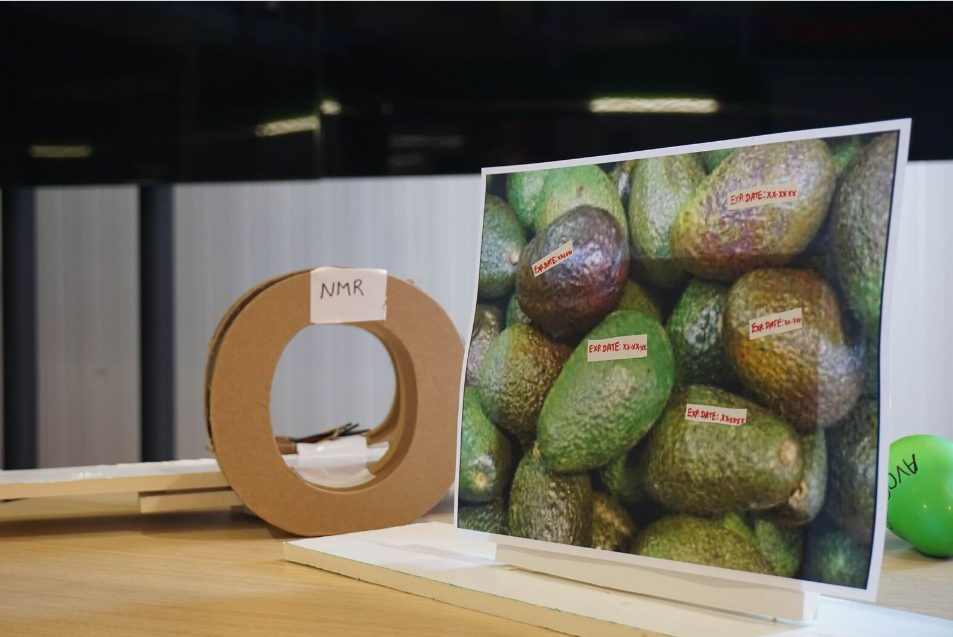 Superconductivity accelerates a sustainable future
Superconductivity accelerates a sustainable future
By Panos Charitos (CERN)
At the two-and-a-half-day Superconductivity Hackathon that hosted by CERN’s IdeaSquare, students worked side-by-side with scientists, researchers and company representatives, to solve problems in different application fields by using the advantages of superconductivity. Interdisciplinarity, creativity and collaboration are the keys to success and the hackathon offered numerous possibilities of interexchange with several experts thanks to its character and informal setting.In addition, the event highlighted the importance of preparing now the next generation of experts for the challenges that lie ahead.
The phenomenon of superconductivity, discovered around 100 years ago, has yet to find its way everyday life. Particle physics uses superconducting magnets since the late 1960s. These magnets generate stronger magnetic fields to curve particle trajectories, thereby allowing to reach previous unexplored territories at higher energies and higher intensities. Moreover superconductors are used for the detector magnets allowing to study in great detail the debris of very energetic particle collisions. Together with their impact on fundamental research, superconductivity has an unexpected transformative potential that can guarantee a greener and sustainable future. Superconductors are the natural choice for any application where strong magnetic fields are needed including applications as diverse as magnetic resonance imaging (MRI), the magnetic separation of minerals in the mining industry and efficient power transmission lines.

An intensive 3-day Superconductivity Hackathon took place at CERN’s Idea Square (Image Credit: FCC collaboration).
The promise for future technologies is even greater, and overcoming our limited understanding of the fundamental principles of superconductivity and enabling large-quantity production of high-quality conductors at affordable prices will open new business opportunities. In an effort to transfer this leading-edge technology to daily applications and tackle the above challenges, the Marie-Curie training network EASITRAIN together with the FCC study, HL-LHC project and CERN’s KT group established a collaboration with the Vienna University of Economics to research new fields of application that generate socio-economical value.
During the past semester, students identified and evaluated new fields of application. More than 120 qualitative interviews with experts from a broad range of industries were carried and 29 potential application areas were selected that in close consultation with the technology and industry experts were subsequently narrowed down to three specific cases: Uninterruptible Power Supply (UPS) systems, fruit sorting machines to monitor food quality and a visionary rocket launch system that could boost our exploration of the solar system in an energy and cost efficient way compared to current conventional systems.
The three topics informed the work of the six teams that participated in the Hackathon. During an intense 3-day program, they identified the challenges for each application, evaluated its commercial adaptation and developed business strategies. Academic and industrial experts joined the teams to answer their questions and steer their imagination. Industrial experts from Babcock Noell (superconducting flywheels for UPS systems), Equinix (Data Centres) MicroTech (fruit shorting machines) and Swissloop (concepts for Hyperloop in Switzelrnad) worked together with the students to develop applications with short-term or long-term applicability. “We have tried to work out our solutions as practically as possible and always have an eye on their concrete implementation" says Marco Boschett from MicroTech, one of the companies that participated in the SC Hackathon.
The jury prize went to the team who developed a fruit sorting method for avocados that will determine the fruits’ maturity. Tonnes of fruit have to be disposed of worldwide because current technologies based on spectroscopy are not able to determine the maturity level of fruit sufficiently accurately, with techniques also offering limited information about small-sized fruit. Superconductors would enable NMR-based scanning systems that allow producers to accurately and non-destructively determine their valuable properties saving billions every year. "The superconducting technology could present the next innovation in the market for the fruit processing industry and open up new possibilities, which ultimately benefits the consumer", said Microtec CEO Federico Giudiceandrea.

Superconductors could present the next innovation in the market for the fruit processing industry and open up new possibilities (Image Credits: Athina Papageorgiou Koufidou)
The audience award was given for the concept of a novel space transport method. Have you ever considered a global energy crisis in the near future? The team dealt with this potential threat and came up with a futuristic, albeit realistic solution. They developed the concept of a high-innovative transport method to harvest the moon using superconductors technology. The moon holds essential resources, including helium-3 which is a gas that could be used as fuel in future nuclear fusion power plants. By establishing two space module stations on the moon and a futuristic space shuttle it will be possible to transport helium-3 to earth while the same station could be used for future trips to the neighborhood of our solar system.

The audience award went to the team that designed a novel superconducting rocket launch system (Image Credit: Athina Papageorgiou Koufidou)
But it is not only the scientific results that matter. The participant build new networks and they will continue working together to cultivate and expand the newly established contacts from the different academic institutes and industries. As Markus Nordberg, head of IdeaSquare, mentioned in his speech during the award ceremony: “You are all winners and the biggest prize is sharing, the fact that you met and shared your experiences and ideas”.
The time is right for superconductivity to emerge as the next great transformational technology — with far-reaching impact: From building new powerful scientific instruments like a future circular collider reaching unprecedented energy scales but also for paving the way to new applications in medicine, energy and other fields impacting our lives.